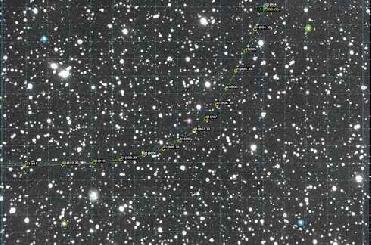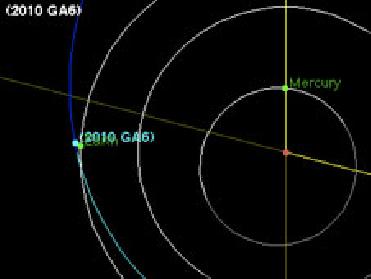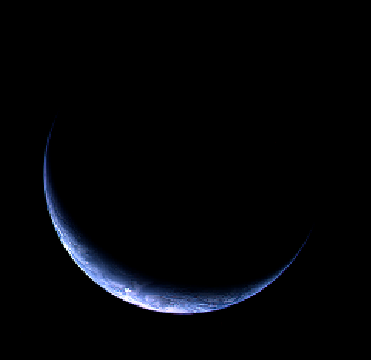
This Near Earth Object, estimated at around 30 meters in diameter, passed 40,000 miles from the Earth's surface on the night of March 2, 2009. This path seen here is a combination of 64 separate images taken by Noeline Teamo and Shoemaker Grant recipient Jean-Claude Pelle on the night of March 1, 2009 from their observatory in Punaauia, Tahiti. Credit: N. Teamo (Southern Stars Observatories)
NEW YORK (BNS): An asteroid about the size of one that exploded over Siberia a century ago passed very close to Earth early Monday.
NASA's Jet Propulsion Laboratory reported that. 2009 DD45 was about 78,500 km from Earth when it zipped past.
"This was pretty darn close," astronomer Timothy Spahr of the Harvard-Smithsonian Center for Astrophysics said.
NASA said that it was just twice as high as the orbits of some telecommunications satellites and about a fifth of the distance to the Moon.
However, it was not as close as the tiny meteoroid 2004 FU162, which came within 6,400 km in 2004, Spahr said. The astronomer said that he knew within an hour of the discovery that it would pose no threat to Earth.
NASA said that the space rock measured between 21 metres and 47 meters in diameter.
The Planetary Society said that it was about the same size as the asteroid that blasted Siberia in 1908 and leveled more than 2,072 sq km of forest.
However, scientists at the Siding Spring Observatory in Australia spotted 2009 DD45 and began tracking it in late February when it was about 1.61 million km away.
Robert McNaught, of the Australian National University, who watches for asteroids, said that it was something not to worry about, but something to be aware of.
The Australian scientist said that while a direct hit on Earth could be a devastating natural disaster keeping track could help prevent disaster.
McNaught said that if discovered in advance and with enough lead time, there is the possibility of pushing it off course. “If you have only a few days, you can evacuate the area of impact, but there’s not a great deal one can do,” he said.
The scientist said that the 2009 DD45 asteroid circles the sun every 18 months, but its path will not threaten this planet at least for the next century.
Systematic programmes to scan the skies have helped in spotting the number of potentially harmful asteroids, McNaught said, adding that nearly 100 new ones have been found in recent years.














The Indian Air Force, in its flight trials evaluation report submitted before the Defence Ministry l..
view articleAn insight into the Medium Multi-Role Combat Aircraft competition...
view articleSky enthusiasts can now spot the International Space Station (ISS) commanded by Indian-American astr..
view article